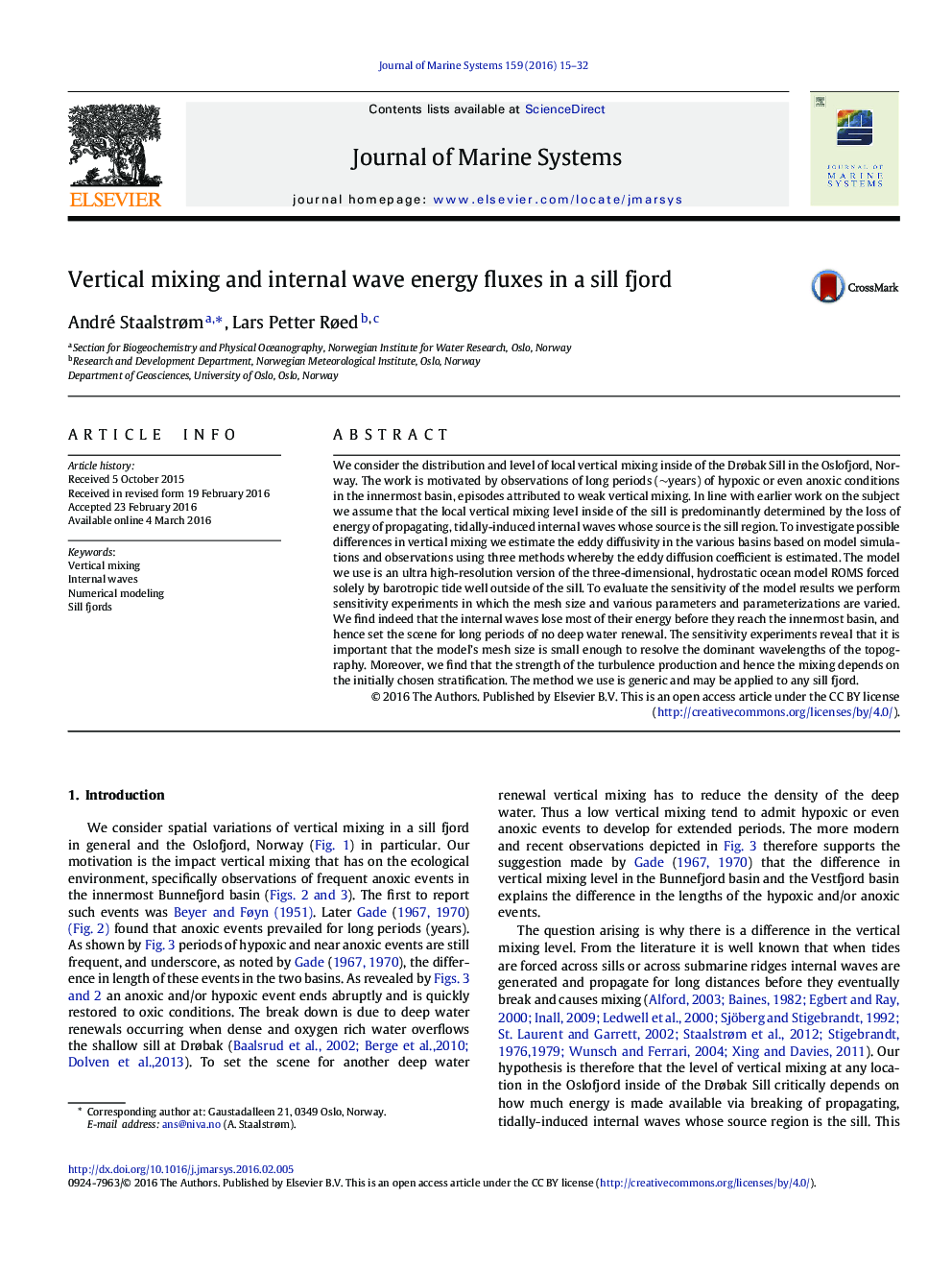| کد مقاله | کد نشریه | سال انتشار | مقاله انگلیسی | نسخه تمام متن |
|---|---|---|---|---|
| 6386637 | 1627271 | 2016 | 18 صفحه PDF | دانلود رایگان |

- Turbulence productions due to breaking of internal waves are estimated using a 3D model.
- The results explain the observed differences in mixing levels in the various basins in a sill fjord.
- It also shows why the innermost basin is prone to develop anoxic events.
- It is crucial that the model resolves the dominant topography scales.
We consider the distribution and level of local vertical mixing inside of the Drøbak Sill in the Oslofjord, Norway. The work is motivated by observations of long periods (â¼years) of hypoxic or even anoxic conditions in the innermost basin, episodes attributed to weak vertical mixing. In line with earlier work on the subject we assume that the local vertical mixing level inside of the sill is predominantly determined by the loss of energy of propagating, tidally-induced internal waves whose source is the sill region. To investigate possible differences in vertical mixing we estimate the eddy diffusivity in the various basins based on model simulations and observations using three methods whereby the eddy diffusion coefficient is estimated. The model we use is an ultra high-resolution version of the three-dimensional, hydrostatic ocean model ROMS forced solely by barotropic tide well outside of the sill. To evaluate the sensitivity of the model results we perform sensitivity experiments in which the mesh size and various parameters and parameterizations are varied. We find indeed that the internal waves lose most of their energy before they reach the innermost basin, and hence set the scene for long periods of no deep water renewal. The sensitivity experiments reveal that it is important that the model's mesh size is small enough to resolve the dominant wavelengths of the topography. Moreover, we find that the strength of the turbulence production and hence the mixing depends on the initially chosen stratification. The method we use is generic and may be applied to any sill fjord.
Journal: Journal of Marine Systems - Volume 159, July 2016, Pages 15-32